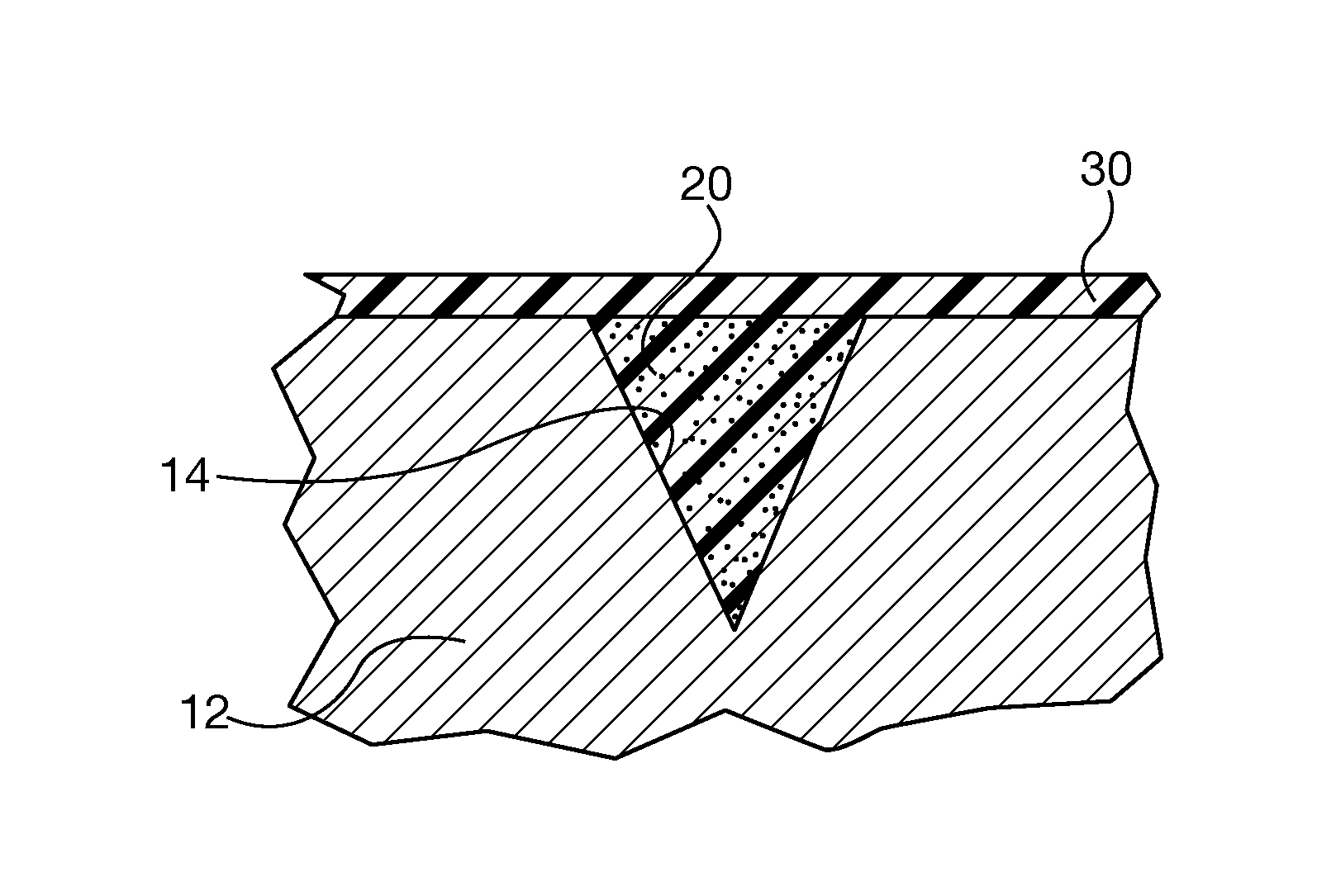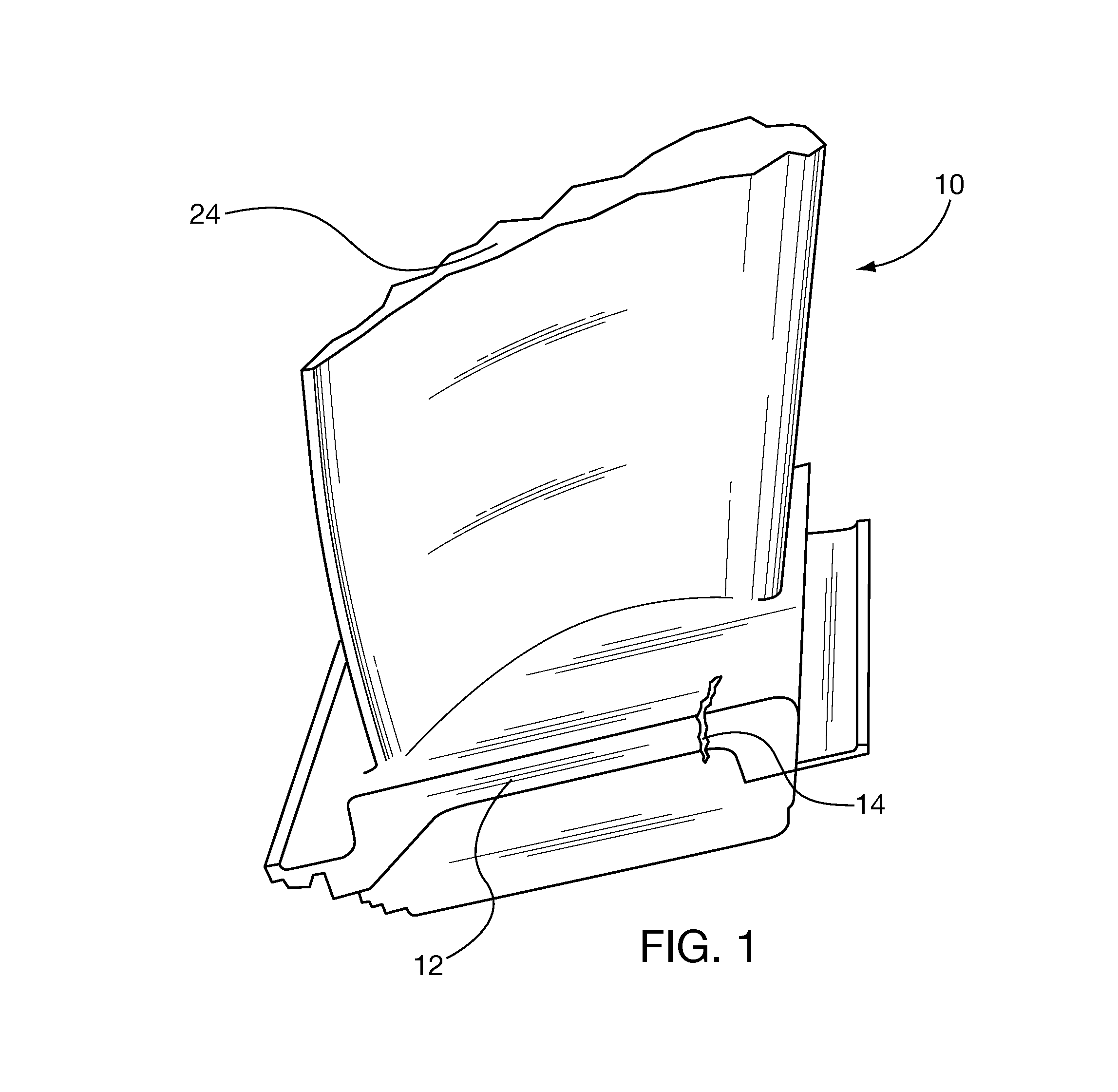Turbine superalloy component defect repair with low-temperature curing resin
a superalloy and component technology, applied in the direction of machines/engines, mechanical equipment, transportation and packaging, etc., can solve the problems that the elements of brazing alloys do not promote good thermal barrier coating adhesion, and achieve the effect of not degrading the structural properties of the component substra
- Summary
- Abstract
- Description
- Claims
- Application Information
AI Technical Summary
Benefits of technology
Problems solved by technology
Method used
Image
Examples
Embodiment Construction
[0027]After considering the following description, those skilled in the art will clearly realize that the teachings of my invention can be readily utilized in fabrication and repair of superalloy components, including for example turbine blades and vanes. Voids and defects, such as cracks, are filled with a low-temperature hardening resin that cures at a temperature less than 200° C., and preferably less than 150° C., without undertaking effort to remove surrounding substrate material that might otherwise structurally weaken the component. The defect or void does not have to be filled with hot braze alloy, reducing effort and cost of repair, as well as reducing likelihood of causing thermal damage to the blade during the brazing process and subsequent heat treatment. When practicing the defect repair methods of the present invention, post defect-filling heat treatment is not required. The component substrate and filler resin are subsequently covered with a thermal barrier coating us...
PUM
| Property | Measurement | Unit |
|---|---|---|
| temperature | aaaaa | aaaaa |
| temperature | aaaaa | aaaaa |
| operating temperature | aaaaa | aaaaa |
Abstract
Description
Claims
Application Information
 Login to View More
Login to View More - R&D
- Intellectual Property
- Life Sciences
- Materials
- Tech Scout
- Unparalleled Data Quality
- Higher Quality Content
- 60% Fewer Hallucinations
Browse by: Latest US Patents, China's latest patents, Technical Efficacy Thesaurus, Application Domain, Technology Topic, Popular Technical Reports.
© 2025 PatSnap. All rights reserved.Legal|Privacy policy|Modern Slavery Act Transparency Statement|Sitemap|About US| Contact US: help@patsnap.com



